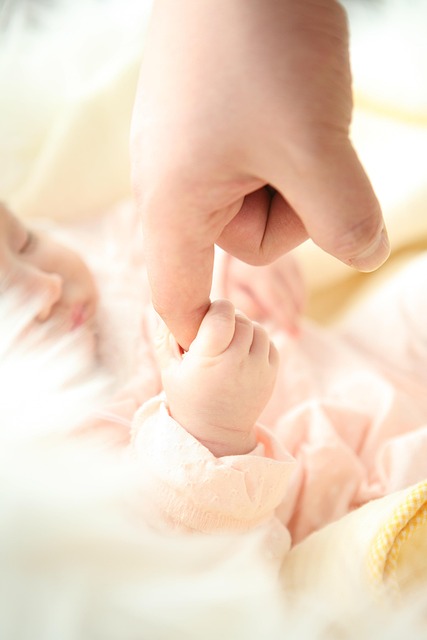Throughout my twenties and early thirties, I found myself in a series of intense friendships with women who were just as unsuitable for me as the partners I dated. The pattern was predictable: I’d meet someone new, excited by our shared interests. We’d bond quickly, mistaking that bond for true closeness, and I would often label it as “best friendship” before we had the chance to build a solid foundation.
I had a habit of oversharing far too soon, eager to offer support that felt disproportionate to our brief history. It gave me a sense of importance when I was the one they called during their crises—situations that seemed all too frequent given how little time we’d known each other. But inevitably, I would fail to be there when it really mattered, leading to accusations that I wasn’t living up to the standards I had set.
Suddenly, the title of “best friend” felt like a heavy burden—like an itchy wool dress I couldn’t take off without help. We both had a hand in it: we rushed into the title without genuinely establishing the friendship first.
This cycle repeated itself about four times, which felt like three too many. Once I recognized the type of women I was drawn to, I tried to heed the warning signs and pay attention to that uneasy feeling in my gut when things seemed off. I made a conscious effort to slow down, convinced that I had learned my lesson by the time I met Tessa.
While she rushed our friendship, I tried to maintain a steady pace. Tessa was charming, funny, and spending time with her was a delightful escape. Yet, after our encounters, I often felt drained or inadequate. Unable to articulate why, I allowed the friendship to accelerate, dismissing the warning signs in pursuit of that coveted sisterly bond.
One evening, while dining together, we had a conversation that etched itself in my memory, both because it hurt and because I later documented it.
“I have a blind date,” I told her.
“Who with?” she asked, taking a bite of her meal.
“A guy Maggie set me up with.”
“Do I know him?”
“No, he’s from upstate.”
“Where exactly?”
“Tivoli, I think.”
“Oh, I probably know him! What’s his name?”
“Graham Hunter.”
Her expression shifted to disbelief. “Really? You’re going to meet Graham Hunter?”
“Yeah, why?”
The air thickened with tension.
“Do you know what he looks like?”
“No. Is he terrible?”
“No, he’s actually really good looking and funny. I just don’t understand why you’re being set up with him.”
Suddenly, I felt a wave of self-doubt wash over me. “So, I’m ugly and boring?” I crumpled my napkin in frustration.
“No! I just… I don’t get it.”
For weeks afterward, I battled feelings of inadequacy, even when I was featured in a New York Times roundup of cultural influencers. Tessa was the last to text me that day.
“Sounds like you had a good day,” she said, her tone off-putting.
“Yeah, it was exciting. I got a new writing assignment.”
“Oh, is it just for a blog or something?”
“No, New York Magazine reached out for a feature piece.”
“Wait, what? Because of that photo of you?”
“Yeah, I guess.”
“Who even knows if you can write?”
Her comments stung. “What’s your point?”
“Here I am, writing and pitching with no luck, and you get a feature because of a photo? That’s just not fair.”
“Why do you think I’m happy just being known?”
Tessa had a valid point. I questioned the basis of the assignment. But she didn’t need to direct her bitterness at me.
The next day, while listening to This American Life, I heard Mike Albo discussing his book, The Underminer: The Best Friend Who Casually Destroys Your Life. The term struck me with an unsettling clarity. Tessa wasn’t just a friend; she was an underminer. Realizing this shifted my perspective entirely. I had been unknowingly attracting underminers instead of genuine friends.
The word “underminer” resonated more than “narcissist,” which I’d previously used to describe my friends. The former was an action, something I could feel happening to me. With this newfound understanding, I had a valid reason to step away from Tessa, which I promptly did.
This revelation transformed everything. I recognized that I had meaningful friendships built on genuine love, not the fleeting infatuation that often occurs between women.
However, I also realized that I had played a part in undermining the potential for real friendships by rushing into them. Tessa was the last underminer I allowed into my life. Once I learned to recognize the signs and trust my instincts, I became adept at avoiding insincere friendships.
After Tessa, I began to heed my intuition rather than ignore it. Now, I’m proud to say I’ve successfully distanced myself from underminers.
If you’re navigating your own journey through friendships, you might find valuable insights in our post about managing your fertility journey. For those looking to enhance their chances, consider checking out this resource on fertility supplements. And if you’re interested in pregnancy and home insemination, visit this excellent resource for guidance on home insemination.
Summary:
Navigating friendships can be tricky, especially when you encounter underminers—friends who inadvertently (or intentionally) diminish your self-worth. After a series of unhealthy friendships, the author learns to recognize the signs and value genuine connections, ultimately empowering herself to distance from toxic relationships.
Keyphrase: Underminer friendships
Tags: [“home insemination kit”, “home insemination syringe”, “self insemination”]
